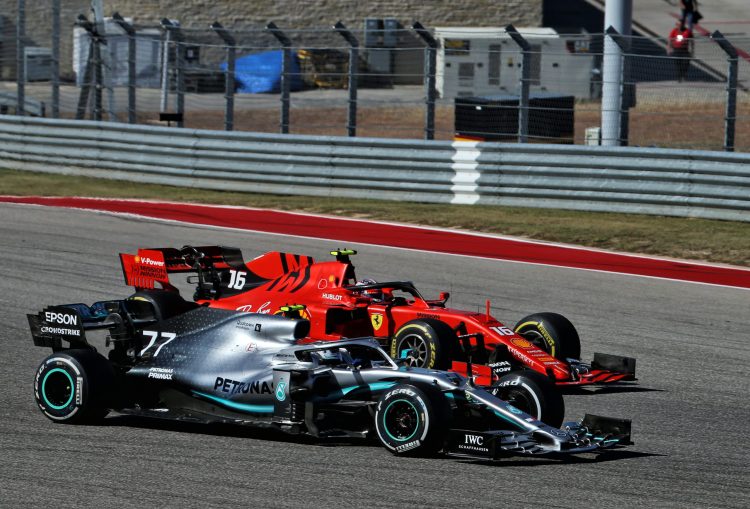The High-Octane Economics of Formula 1: Unraveling the Costs Behind an F1 Car

Formula 1, the pinnacle of motorsport, is a realm where cutting-edge technology, precision engineering, and lightning-fast speeds converge. Beyond the roar of engines and the thrill of races lies a complex financial landscape that fuels the entire spectacle. At the heart of this economic labyrinth is the staggering cost of an F1 car. In this article, we delve into the intricate web of expenses that make up the price tag of these high-performance machines.
The Chassis: A Carbon Fiber Masterpiece:
The backbone of any Formula 1 car is its chassis, a lightweight structure that houses the driver and serves as the foundation for various components. Constructed primarily from carbon fiber, the chassis is an engineering marvel designed for optimal strength and aerodynamics. The cost of crafting this carbon-fiber masterpiece can reach astronomical figures, with teams investing millions in research and development to push the boundaries of structural integrity and weight reduction.
Power Unit: The Heart of the Beast:
The beating heart of an F1 car is its power unit, a hybrid system that combines a turbocharged V6 engine with energy recovery systems. The development and production of these power units represent a significant chunk of the overall cost. The engines are finely tuned to extract maximum power while adhering to strict fuel efficiency regulations. The relentless pursuit of performance gains requires continuous investment in research, testing, and innovation, contributing to the eye-watering cost of an F1 car.
Aerodynamics: Slicing Through the Air:
Aerodynamics play a pivotal role in the performance of an F1 car. The sleek, aerodynamic design is crucial for minimizing drag and maximizing downforce, ensuring optimal grip on the track. Wind tunnel testing, computational fluid dynamics, and advanced simulations are integral to refining the aerodynamic profile. The costs associated with these technologies, coupled with the development of intricate components like front wings, rear wings, and bargeboards, contribute significantly to the overall expenditure.
Materials and Manufacturing:
The quest for lightweight materials and advanced manufacturing processes adds another layer to the cost of an F1 car. Exotic materials like titanium and magnesium are used extensively to reduce weight without compromising strength. Additionally, the manufacturing processes involved, such as additive manufacturing (3D printing) and precision machining, demand substantial investments in both equipment and skilled labor.
Electronics and Data Analysis:
Formula 1 cars are equipped with a sophisticated array of electronics and sensors that gather real-time data during races and testing. The telemetry systems monitor every aspect of the car’s performance, providing engineers with invaluable insights for optimization. The cost of developing, maintaining, and constantly upgrading these electronic systems is a considerable factor in the overall budget of an F1 team.
Testing and Simulation:
The pursuit of perfection in Formula 1 requires relentless testing and simulation. On-track testing is limited, prompting teams to invest heavily in virtual simulations and testing facilities. Advanced simulators replicate race scenarios, enabling drivers and engineers to fine-tune strategies and setups without burning rubber on the actual track. These state-of-the-art testing methods contribute significantly to the overall cost but are essential for staying competitive in the fast-paced world of F1.
Personnel and Salaries:
Behind the scenes, an army of skilled professionals works tirelessly to design, build, and maintain an F1 car. From aerodynamicists and engineers to mechanics and support staff, the payroll for a Formula 1 team is substantial. The salaries of top-tier drivers also add a significant chunk to the overall cost. Teams recognize the value of experienced and skilled personnel in gaining a competitive edge, and consequently, investing in human resources is an integral part of the F1 financial landscape.
Logistics and Travel:
The globe-trotting nature of the Formula 1 calendar adds another dimension to the cost structure. Teams must transport their cars, equipment, and personnel to various locations around the world for races and testing. The logistics involved in managing this complex operation, including freight costs, travel expenses, and accommodation, contribute to the overall financial burden of participating in the championship.
Conclusion:
In the high-stakes world of Formula 1, the cost of an F1 car transcends the tangible components and encompasses a vast array of factors. From cutting-edge technology and materials to the skilled professionals who bring these machines to life, the economics of Formula 1 is a delicate dance between innovation and expenditure. As teams continue to push the boundaries of performance, the cost of participating in this pinnacle of motorsport remains a testament to the relentless pursuit of speed and excellence.
What contributes to the high cost of Formula 1 cars?
- The cost of Formula 1 cars is primarily driven by the advanced technology, materials, and engineering involved. Major components include the chassis, power unit, aerodynamics, electronics, and continuous research and development.
2. How much does a Formula 1 chassis cost?
- The cost of an F1 chassis can vary, but it typically reaches into the millions. The extensive use of carbon fiber, coupled with precision engineering for aerodynamics and safety, contributes significantly to the overall cost.
3. What is the role of aerodynamics in the cost of an F1 car?
- Aerodynamics play a crucial role in F1 car performance. The design and development of components like front wings, rear wings, and bargeboards, as well as wind tunnel testing and computational fluid dynamics, contribute to the high cost.
4. Why are F1 power units so expensive?
- F1 power units are complex hybrid systems that combine a turbocharged V6 engine with energy recovery systems. The high cost is attributed to the constant pursuit of performance gains, strict fuel efficiency regulations, and significant investments in research, development, and testing.
5. How do materials and manufacturing impact F1 car costs?
- The use of lightweight and exotic materials such as titanium and magnesium, coupled with advanced manufacturing processes like additive manufacturing and precision machining, adds to the cost of F1 cars by ensuring a balance between strength and weight.
6. What role do electronics and data analysis play in F1 car costs?
- F1 cars are equipped with sophisticated electronics and sensors for real-time data analysis during races and testing. The constant development, maintenance, and upgrading of these systems contribute to the overall cost of an F1 team.
7. Why is testing and simulation crucial in Formula 1, and how does it impact costs?
- Testing and simulation are vital for refining car setups and strategies. The limitation on on-track testing leads teams to invest heavily in advanced simulators and testing facilities, contributing significantly to the overall budget.
8. How do personnel and salaries factor into the cost of F1 cars?
- Formula 1 teams employ a diverse range of skilled professionals, from aerodynamicists to mechanics. The salaries of personnel and top-tier drivers form a substantial part of the overall cost, reflecting the value of experience and expertise.
9. What logistical challenges contribute to the cost of participating in Formula 1?
- The global nature of the F1 calendar poses logistical challenges. Teams must transport cars, equipment, and personnel to various locations worldwide, incurring expenses for freight, travel, and accommodation.
10. Are there cost-cutting measures in place for Formula 1? – Formula 1 has implemented cost-cutting measures, including budget caps and regulations aimed at reducing expenses. These measures seek to create a more level playing field among teams and enhance the sustainability of the sport.





